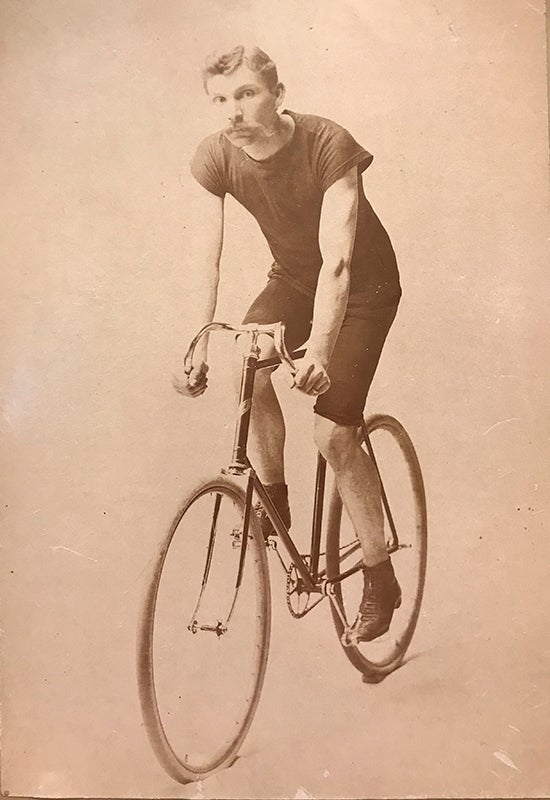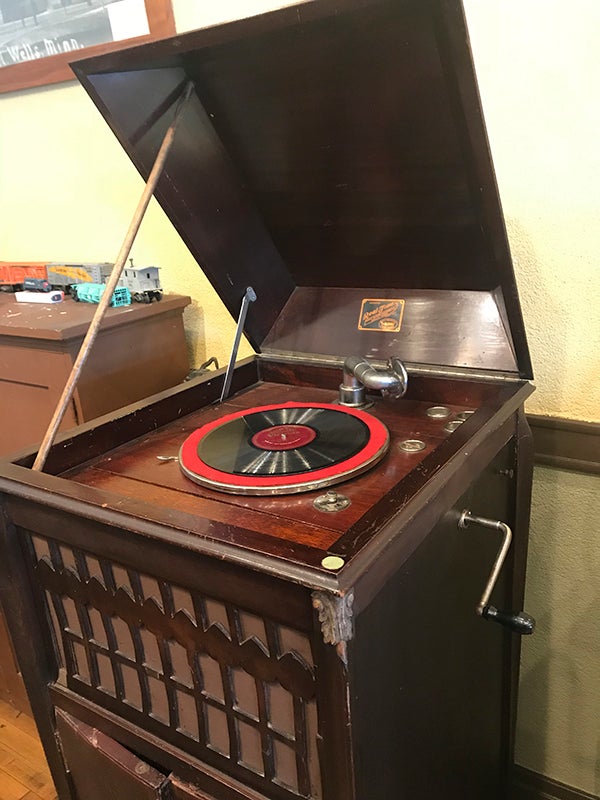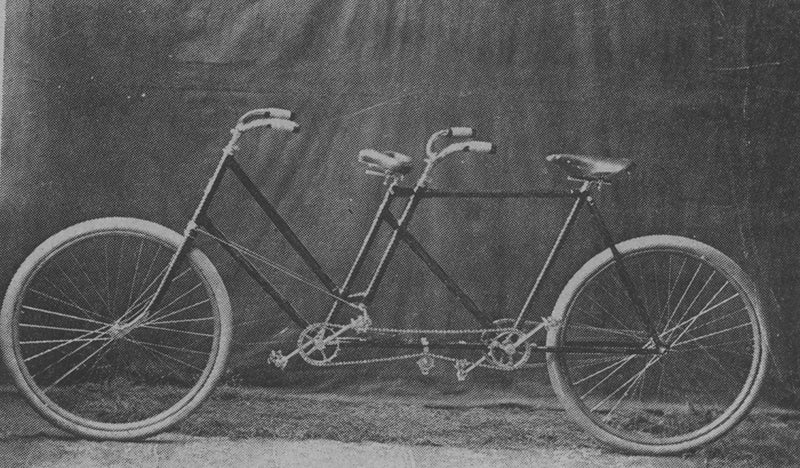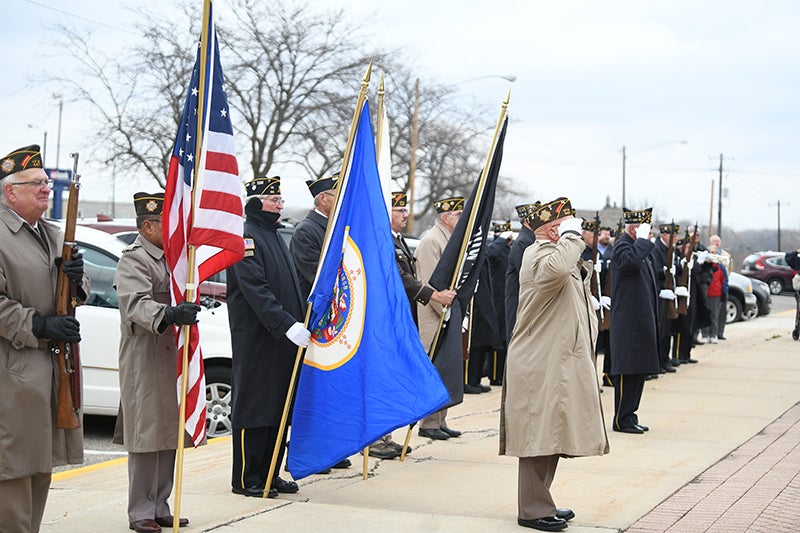Influential citizens of the past
Published 9:00 am Sunday, March 11, 2018
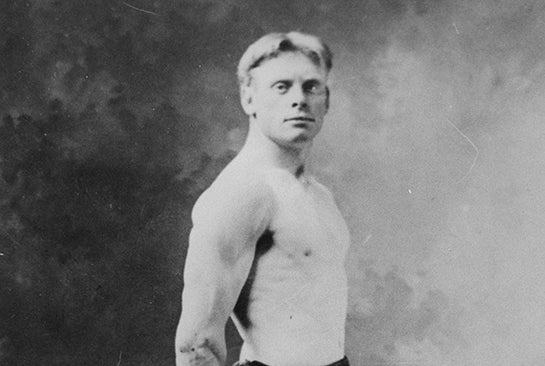
- Helmer Myre was named the Light Heavyweight Champion of the World for 1921 to 1922. Photo courtesy of the Freeborn County Historical Society
Where everyone stands today is the direct result of the footsteps of those who walked before them. Citizens of the past shaped their communities, enriched their cities and laid the groundwork for all who would follow. Whether it was aiding in establishing a city, contributing in the areas of business and job growth or enhancing the lives of others by bringing about changes in education, these individuals positively influenced the lives of others who, in turn, have the opportunity to positively effect the lives of yet another generation.
This list of citizens of the past was collected with the assistance of Linda Evenson of the Freeborn County Historical Museum, Betsy Hermanson of the Wells Depot Museum and Marvel Beiser of the Clarks Grove Area Heritage Museum.
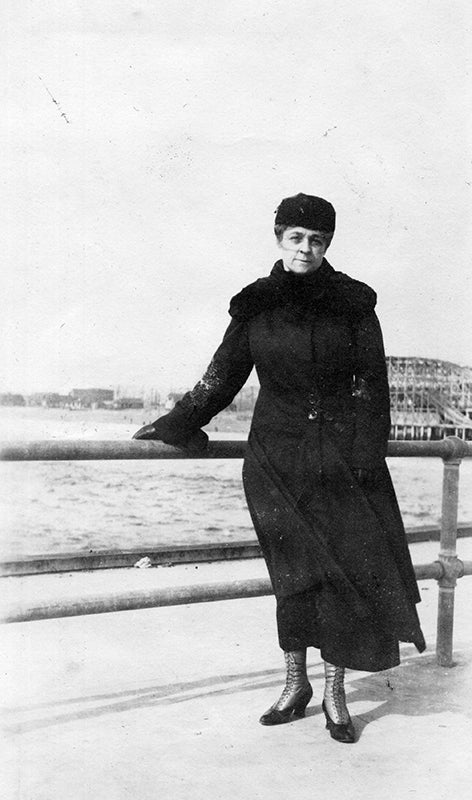
Katherine Meighen worked on the Shoreland Heights subdivision and was the first woman to serve on the Naeve Hospital Board. – Photo courtesy of Freeborn County Historical Museum
Katherine Meighen
1873-1968
Born in 1873 in Cedar Falls, Iowa, Katherine Meighen was described as Albert Lea’s first and most successful career woman by the time of her death.
Meighen worked hand in hand with her first husband, William A. Morin, on land development and insisted upon learning the business following his passing. She set up an office in her dining room and began plugging away at the secretarial and management duties of the job she had to assume.
She started subdividing land adjacent to her own property and had Oak Street put in before systematically breaking the land into different lots before having homes constructed. Before long, she was working on the Shoreland Heights subdivision.
Meighen married her second husband, John Meighen, in 1917, and was appointed by then Secretary of Commerce Herbert Hoover as area chairman for the Better Homes movement — which was described as a national affair with the objective of bringing up the standard of homes and living. The Better Homes movement also did considerable work in the area of zoning regulations, some of which are still in place today.
Meighen was also the first woman to serve on the Naeve Hospital Board. She served as its secretary for nine of her 11 years she was on the board. She was a charter member of the hospital’s auxiliary, as well as a lifetime member.
Meighen also made significant contributions to the YMCA and Freeborn County Historical Society.

Helmer Myre was named the Light Heavyweight Champion of the World for 1921 to 1922. Photo courtesy of the Freeborn County Historical Society
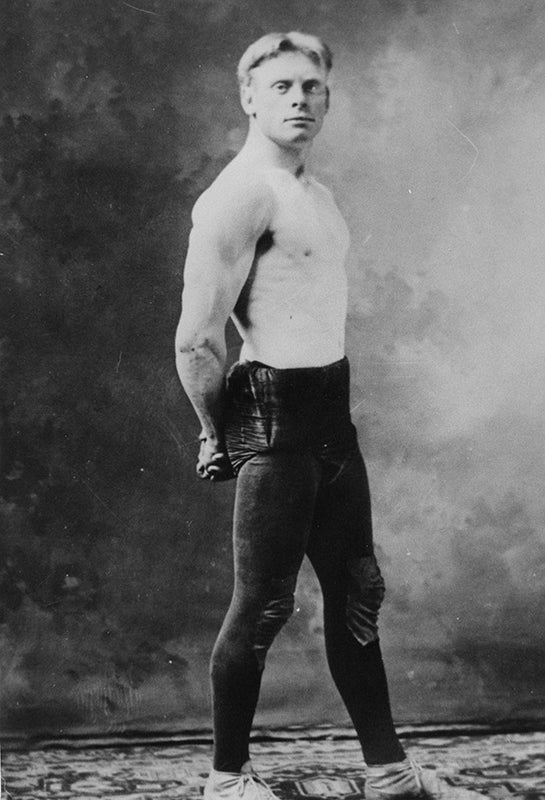
Helmer Myre was named the Light Heavyweight Champion of the World for 1921 to 1922. Photo courtesy of the Freeborn County Historical Society
Helmer Myre
Jan. 2, 1891- Oct. 6, 1951
Helmer Myre grew up in Iowa. Plagued with allergies, he was a sickly child, but long hours in the fields gave him a physique that led others to encourage him to take up wrestling. Myre took up the sport in 1911 and by 1918 was the United States Lightweight Champion. He was named the Light Heavyweight Champion of the World from 1921 to 1922.
Myre, his wife, Ethel, and their three children, Herman, Charles and Ruby, moved to a farm outside Geneva in 1918 and to Albert Lea in 1921, when he accepted a position with the Albert Lea Police Department for four years. In 1928 he was appointed to fulfill the term of sheriff and served in the position until 1938.
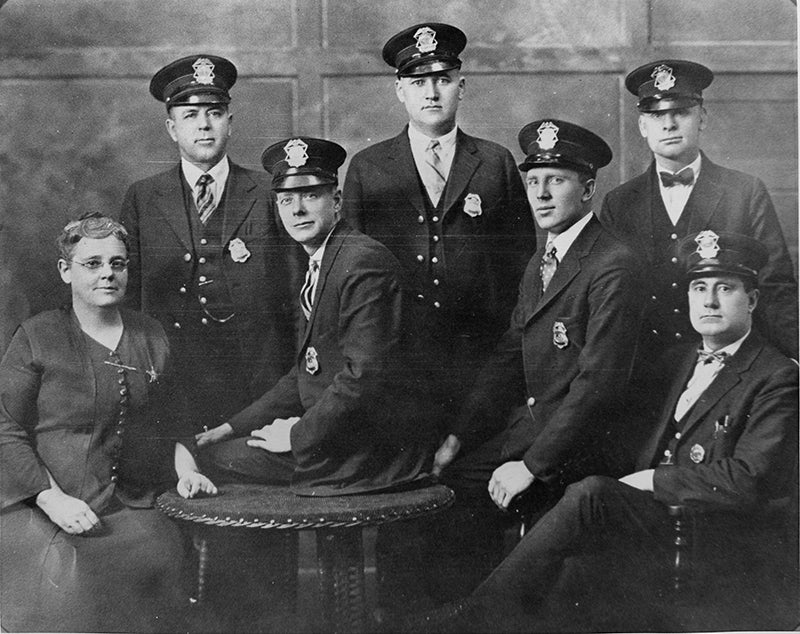
Helmer Myre, back row, third from the left, poses with officers on the Albert Lea Police Department. Photo courtesy of Freeborn County Historical Museum.
During this time, his family lived at the jail next to the present day courthouse. The jail and the sheriff’s residence were connected and his wife served as cook for all the prisoners.
Myre was elected Minnesota state representative for the 6th District for two terms and was later elected to the state Senate for two terms. He eventually retired from politics at the advice of his physician.
Following his death at the age of 60, the Minnesota Legislature named a state park in his honor in 1953. Helmer Myre State Park is known today as Myre-Big Island State Park.
Ethel Myre lived to the age of 96. She died Nov. 19, 1986.
- George Rentz won first prize at the Chicago Fair, however, Wells Depot Museum staff are not sure if it was for the design of his bicycle or for racing it. Photo courtesy of Wells Depot Museum
- The Real Tone Phonograph was invented by George Rentz. One of the phonographs is on display at the Wells Depot Museum. Kelly Wassenberg/Albert Lea Tribune
- George Rentz was credited with inventing a bicycle for two. Image courtesy of Wells Depot Museum
George Rentz
1867-1947
George Rentz was an Iowa native who moved to Wells sometime after starting a family with his wife, Mary. His profession was listed as a jeweler in many census records, and he operated Rentz Jewelry Store with his youngest son, Frank Rentz.
George Rentz was also an inventor. According to a Tribune article written Sept. 23, 1956, he had patents on a bicycle for two, a gas lamp that was manufactured at American Gas Co. in Albert Lea and the first self-cleaning fountain pen, which was sold at his family’s jewelry store in Wells.
George Rentz invented the Real Tone Phonograph, as well. The phonograph was advertised as having an “improved reproducer which makes the tone the clearest and sweetest ever heard.” The Wells Depot Museum has one of the phonographs on display, along with the advertisement, which listed the price of the device as $75 in 1918. At today’s prices, the Real Tone Talking Machine would be approximately $1,350.
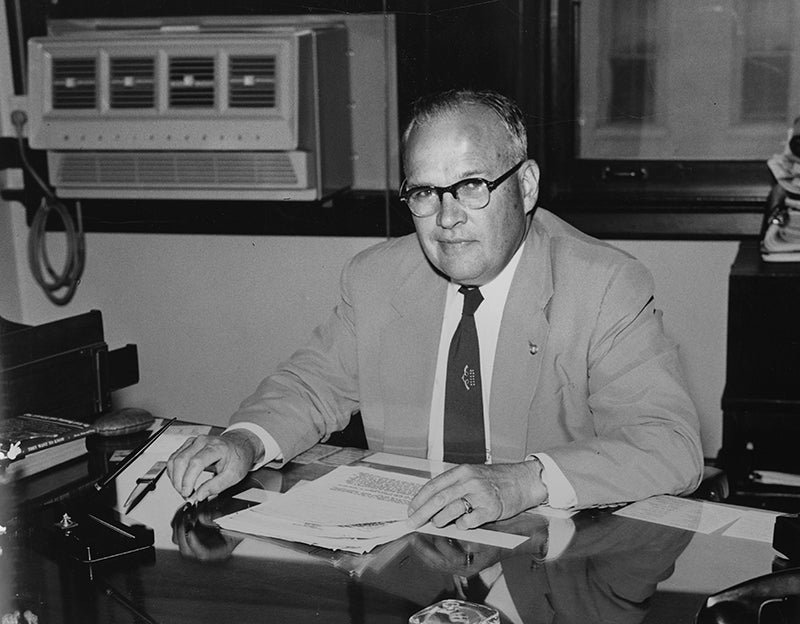
Charles Myers played a pivotal role in establishing Jobs Inc. in Albert Lea. Photo courtesy of Freeborn County Historical Museum.
Charles Myers
1899-1991
Charles Myers was cited nationally for creating Jobs Inc., which was a program designed to encourage aggressive industrial development in the time following World War II.
Myers came to Albert Lea in 1937 as the district manager for Interstate Power Co.
“In 1943 he was chairman of the Albert Lea-Freeborn County Postwar Planning Committee, which in cooperation with the U.S. Chamber of Commerce, published ‘A Procedure for Community Postwar Planning’ which received national and international publicity,” according to the 1998 Freeborn County Heritage Book.
In 1944, Myers and 97 businessmen in the county developed Jobs Inc., and he was elected to serve as its first present. He served in the position for 16 years. In 1960, he served as chairman of the board.
He served locally as a president of the Kiwanis Club, was a lifetime member of the Masonic Lodge and was a member of the Albert Lea American Legion and the Elks Club.
At the state level, he served in several appointments, including the state’s Economic Advisory Council, Board of Minnesota Efficiency in Government Commission and the advisory commission to the state’s Business Development Agency. A street in the Jobs Industrial Park was named Myers Road in his honor.
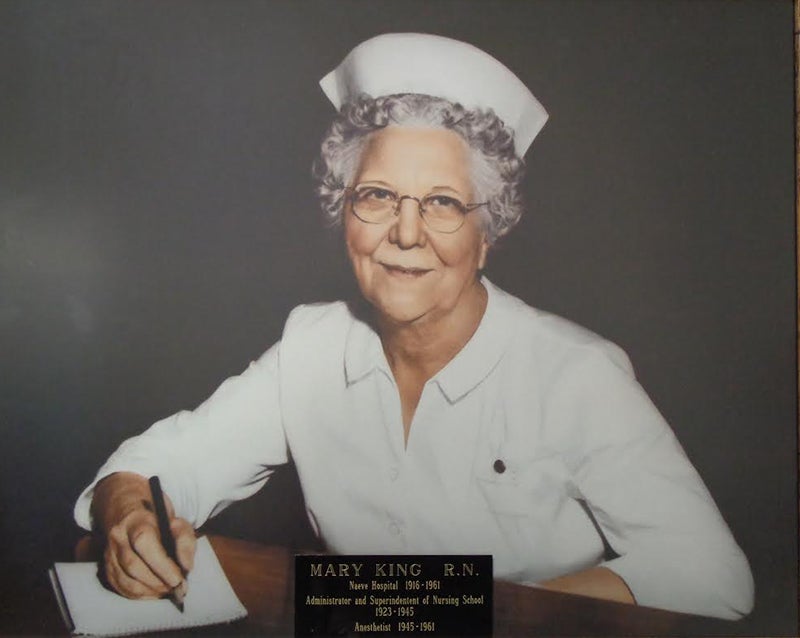
A portrait of Mary King. Image courtesy of Freeborn County Historical Museum
Mary King
April 14, 1887-March 11, 1980
Mary King was a lifelong resident of Freeborn County, where she dedicated her life to the nursing profession.
King graduated in Naeve Hospital’s School of Nursing in 1916. She continued her education at the University of Minnesota.
King was the second superintendent of Naeve Hospital and director of the school of nursing from 1923 to 1945. During this time period she was in charge of all the business necessary to maintain and operate the hospital, selected and taught the students who attended the nursing school and served as an X-ray technician.
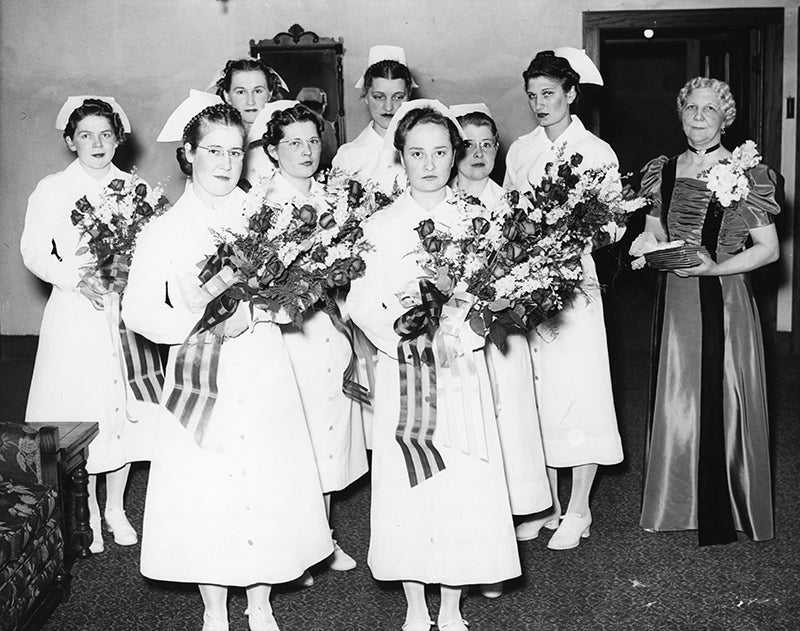
Mary King, director of the Naeve Hospital School of Nursing, poses with the Naeve Hospital School of Nursing class of 1939. Those pictured with King include Harriet Hoyne, Francis DeVault, Beryl Anderson, Imogene Johnson, Margaret Pulver, Hazel Nyhus, Mary Hord and Helen Bennett. Photo courtesy of the Freeborn County Historical Society.
After resigning as superintendent, she furthered her education and came back on a full time basis as a nurse anesthetist until she retired from Naeve Hospital in 1961.
Her public service was not over, as she volunteered to serve as the assistant superintendent of St. John’s Lutheran Community without pay. She started this position on St. John’s opening day, Jan. 2, 1962, and continued to do so for four years.
She died at the facility in 1980.
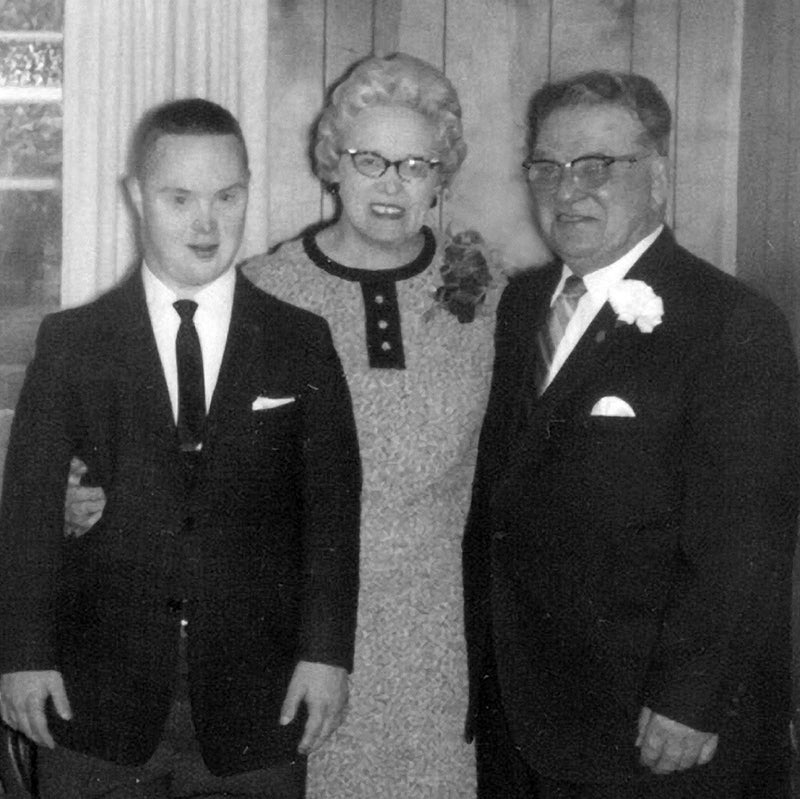
Dennis Adair, left, received an education at the Alpha Class due to his mother, Florence Adair, center, who advocated for special needs children to have somewhere to receive an education before federal mandates required public schools to educate special needs children. Floyd Adair, Florence Adair’s husband and Dennis Adair’s father, is shown on the right. Photo courtesy of Freeborn County Historical Society
Florence Adair
1908-1985
Before the American Disabilities Act mandated all children receive a free and appropriate public education in the least restrictive environment possible, there was the Alpha Class in Albert Lea.
The school began after a plea from Florence Adair to the Kiwanis Club about her son, Dennis, who had Down syndrome.
“Our child is a United States citizen. He is a resident of the city of Albert Lea, and yet outside our own family circle, kind friends and neighbors, he is not accepted. Rather he is neglected, ignored or forgotten. There is no place in the public school system for him. The pity of it is, there truly is no place!” she said in her speech. “But why shouldn’t there be a place for him and many other children like him, right here in Albert Lea? In a democracy such as ours, he should have equal rights with other children. He is just like any other child; he laughs and plays, loves affection and reacts to abuse the same as other children. True, he cannot compete with normal children in learning reading, writing and arithmetic, and he shouldn’t be expected to.
“We don’t ask for the impossible for our child and others like him. All we want is for him to be accepted for who he is. How can he learn? Just like any other child, but in slow motion. Not only himself, but also the community will benefit from him being taught,” she later concluded.
Five months later, the Kiwanis Club sponsored the Alpha Class — this was 24 years before special education was federally mandated.
Adair also founded Arc of Freeborn County and The Arc-Minnesota.
Adair lived to the age of 76, and managed to care for her son at home until just prior to her death. She and her husband, Floyd, also had a daughter, Carol.
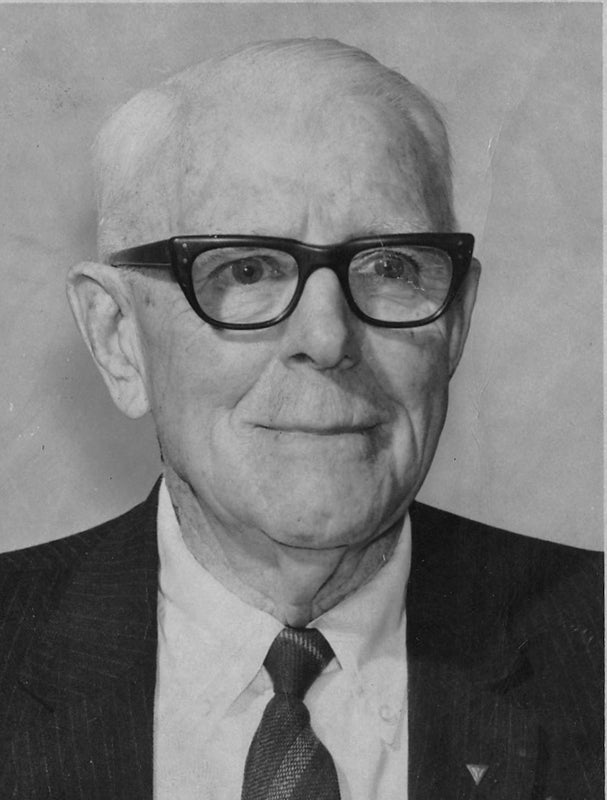
J.M. Snyder is credited for reactivating the YMCA in Albert Lea, where he served as executive secretary for 27 years. Photo courtesy of Freeborn County Historical Society
James “J.M.” Snyder
1889-1983
Snyder came to Albert Lea in 1928 to reactivate the Albert Lea YMCA program. He served as executive secretary of the organization for 27 years before he retired.
In 1931, he was asked by the city manager to manage softball teams in the city of Albert Lea. At the peak in 1938, there was said to have been 34 teams of men and boys playing softball and baseball.
Snyder brought many different programs to Albert Lea. Some of the programs were just for fun, but most added a dimension of quality to life, such as learning a new skill, leadership abilities, sportsmanship, learning to work with others or group living experiences. One program he felt personified those characteristics was camping, which was also one of Snyder’s first loves.
Snyder introduced camping to the Albert Lea area in 1929. He began Hi-Y Camp on Beaver Lake and a boys’ camp on Pickerel Lake. In 1939, Moraine Point was leased and was purchased the following year to conduct camping programs. The camp was said to have had accommodations for 60 boys, eight counselors and two cooks.
In the 1960s, Camp Moraine became a part of the expanding state park property. The YMCA camp activities dwindled and all the cabins were demolished. The area has since been renamed New York Point Group Camp. It is part of Myre-Big Island State Park. Two permanent buildings, a dining hall and craft hall are still reminders of where Camp Moraine once stood.
In spite of a large volume and quality of programs, the Y faced economic hardships for a few years in the ’30s and there were times that a paycheck didn’t come to Snyder for a few months; he not only stuck with his job, he often helped out those who asked him for assistance during the height of the Depression.
His gifts of time, energy and dedication were honored in 1971, when it was announced at the fifth annual Freeborn County Softball Association Banquet that they were naming the ballpark J. M. Snyder Fields.
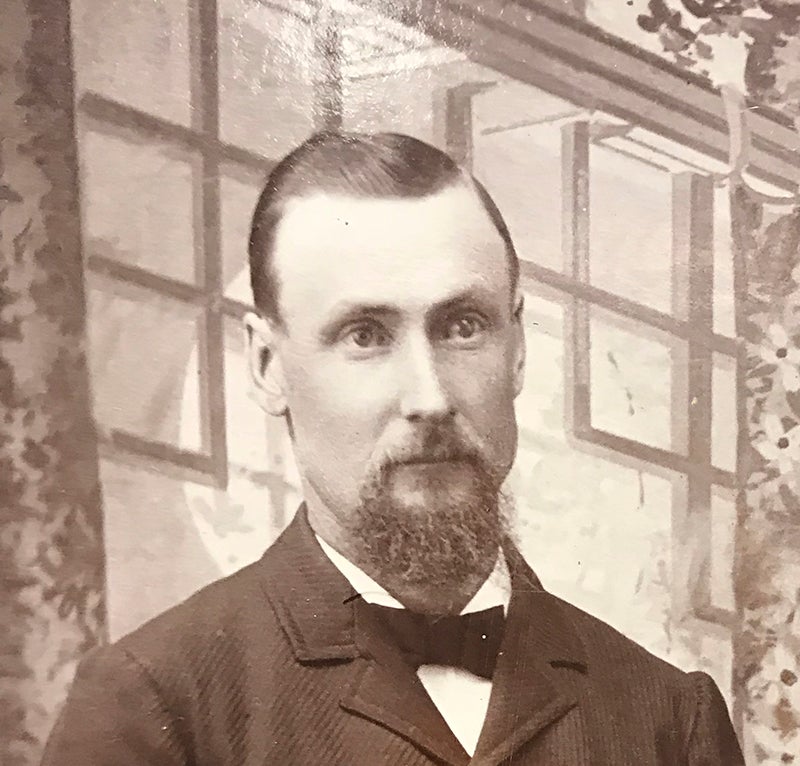
J.W. Peterson was instrumental in establishing the village of Clarks Grove. Photo courtesy of Clarks Grove Area Museum
J. W. Peterson
Dec. 28, 1856-July 2, 1933
J.W. Peterson, along with his brother, Charles, were influential in establishing the village of Clarks Grove. J.W. Peterson started the first co-op creamery in Minnesota in 1890. The brothers then worked together to build a store across the road from the creamery. The store carried some groceries as well as farm supplies and contained a blacksmith shop. The store later became Clarks Grove Hardware and Implement. As more customers came into the area, there was a need for a more complete grocery store.
Mercantile Grocery, a cooperative store, was then built the next year with J.W. Peterson serving as its first president. The brothers were also the first to build homes in the community.
A one-room schoolhouse was built on J.W. Peterson’s farm property across from the farm supply store in December 1901. In 1903, J.W. built another store, which housed the post office for many years. Charles Peterson was its postmaster.
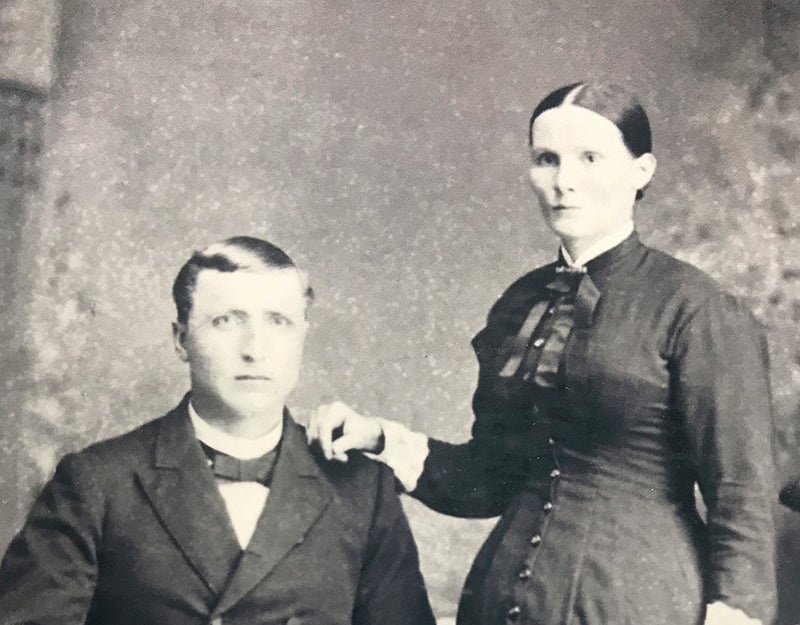
Charles Peterson with his wife, Hansine. Photo courtesy of the Clarks Grove Area Musuem
Clarks Grove was officially incorporated on Jan. 1, 1920. J.W. Peterson was involved and held office in many different community organizations. At the time of his death, he was president of Clarks Grove Lumber Co., a member of the village council and a member of First Baptist Church, known then as Danish Baptist Church.
Danish Baptist Church was located on the grounds of the church cemetery northeast of the village of Clarks Grove. In 1915 a new church was built in Clarks Grove and the old one was torn down. J.W. Peterson helped collect funds that were used to rebuild the church. He was a faithful member of the church for 58 years, a trustee for over 25 years, a leader and very active in many organizations.
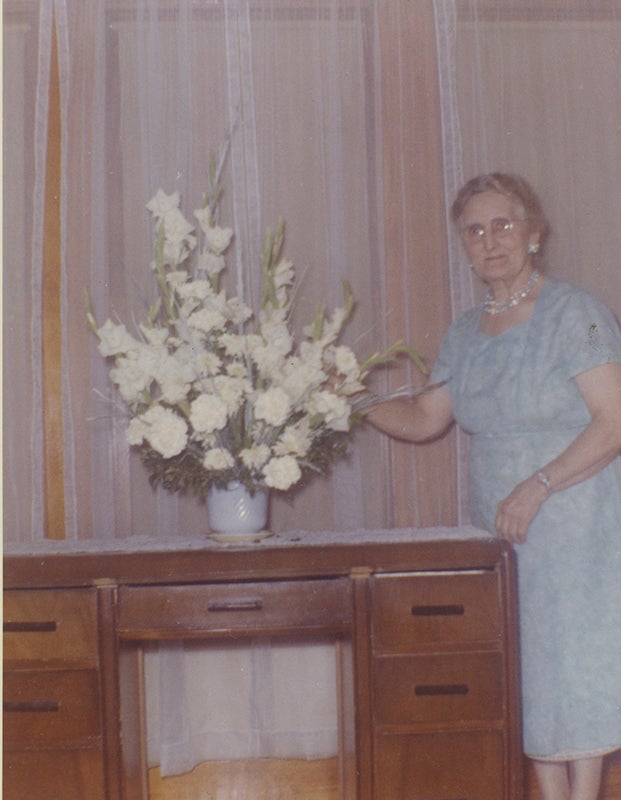
Dr. Philomena Wievel was a doctor of oestopathy who served patients in the Wells area for over 50 years. Photo courtesy of Wells Depot Museum
Philomena Wievel
Aug. 11, 1885-Aug. 25, 1984
Philomena Wievel moved to Wells in September 1920 after graduating from Still Osteopathic College in Des Moines. Her first office was in the Knights of Columbus building, which was damaged by the Aug. 17, 1946, tornado. Her office would move a couple more times before she bought a home at the corner of Franklin Street and U.S. Highway 22, which also contained an office space for her to see patients.
Originally, Wievel had considered going into the nursing profession, but a serious injury had her questioning if she’d ever walk again. She received help through osteopathy, regaining her ability to walk and persuading her to take a different career path.
During her 50-year career, Wievel was a member of the Osteopathic Cranial Association, American Osteopathic Association and Osteopathic Academy of Anatomy.
She was also well known for her poetry. A book of her poems, “Silent Symphonies,” was published in 1944. Her poetry earned her an honorary membership in the Eugene Field Society, a national association of authors and journalists.
While much of her poetry reflected her religious beliefs, others highlighted everyday thoughts and feelings, such as homesickness or current events.
Wievel was known to be a strong-willed woman. She never married and continued to give treatments weeks prior to her death to the nursing home staff who cared for her.
Homesick by Philomena Wievel
“Walking the lonely path of a crowded street,
Hungrily you gaze into each face that you meet.
But not a trace of a familiar face can you see;
Then turn aside, to hide.
A trembling tear of a heart apart, that pains and aches aloud,
While walking the lonely path of a surging crowd.”


